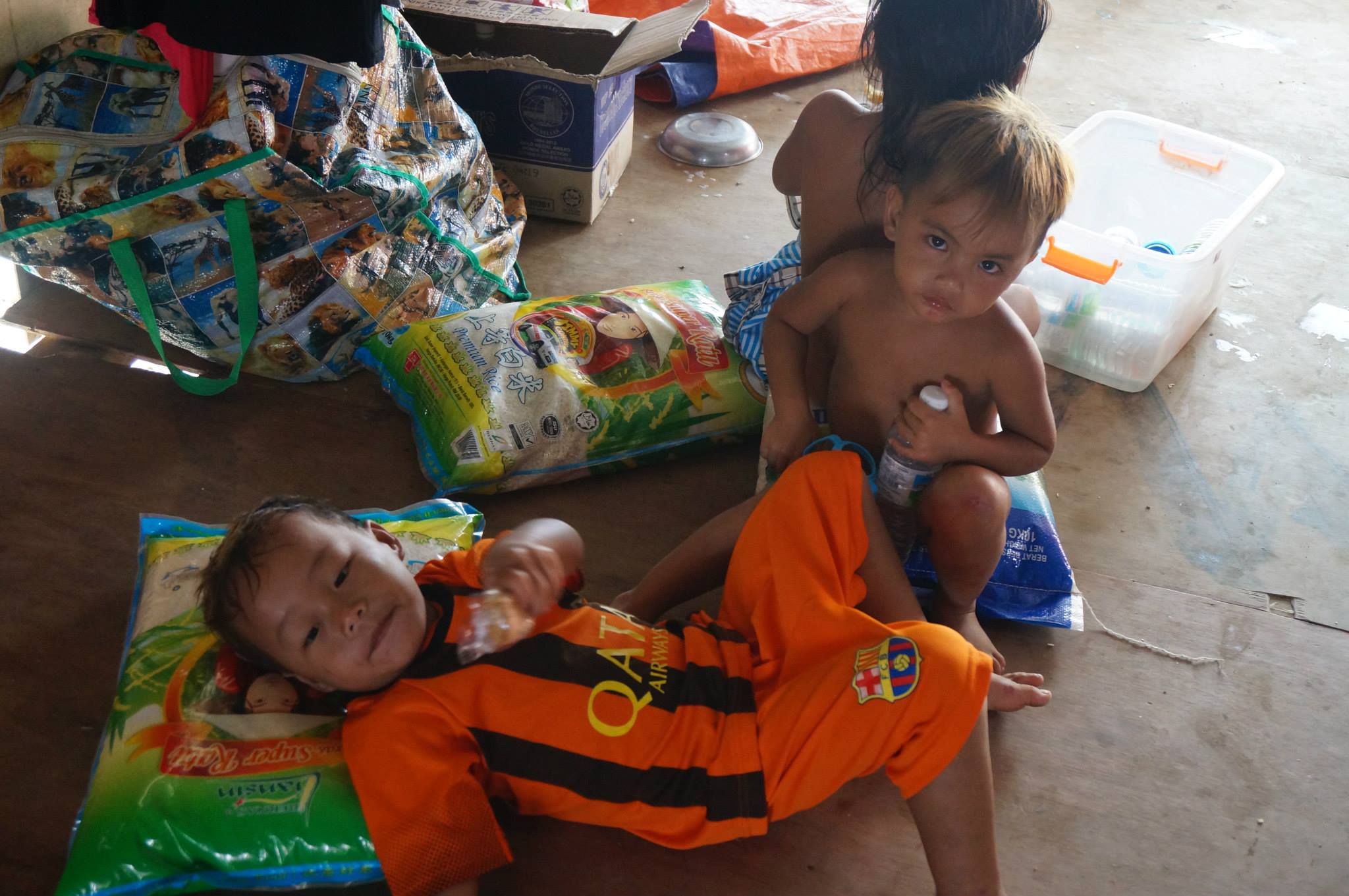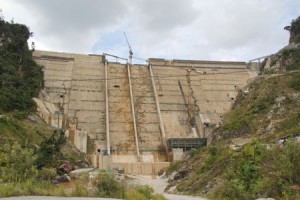
Why has the inundation begun when the dam face seemed incomplete last week?
Sarawak Report has received news of a critical development in the Murum Dam blockade, which has now been maintained for several weeks by Penan tribespeople forced from their homes by rising waters
Around a hundred of the men, women and children have broken away from the original site, where they were being penned in by riot police, and have now moved to a new blockade site down on the main Murum highway.
This position cuts across all roads leading to and from the site, including side roads and link roads that Sarawak Energy had been using to sidestep the original protest, in order to access the head of the dam and their various construction sites.
In the course of the day the new blockade is reported to have stopped all traffic going into the dam site, including cement lorries and Sarawak Energy (SEB) vehicles.
One NGO commentator told Sarawak Report:
“This will bring a critical situation within a few days, because the Penan are now stopping any vehicles belonging to SEB and building materials and cement to the powerhouse, which is still under construction. Other areas at the dam head are also not completed, even though SEB has given the orders to start inundating the dam. Within 10 hours all the cement that is at the construction site will have been used up. Lorries are bringing supplies in from Bintulu using this Murum Road. These are now being stopped.”[Brimas spokesperson].
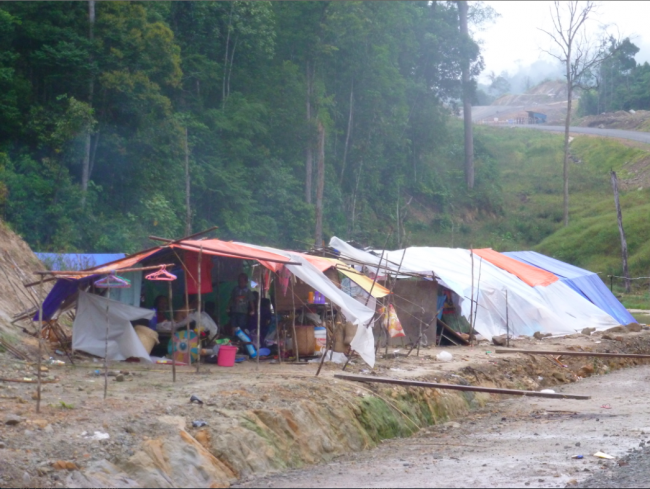
SEB claimed to journalists there were no Kenyah or Penan blockades at Murum!
The development comes after an astonishing propaganda move by Sarawak Energy at the end of last month, at the same time that company bosses were over at the United Nations in Geneva claiming that Sarawak was “adopting best practice” over its corporate social responsibility and the environment.
It has emerged that the state-owned company organised an all-expenses paid corporate trip for members of the Sarawak Journalists Association to visit the Murum Dam site. According to one source:
“They flew in to Bintulu on 28/29 October, received an official briefing by SEB in Bintulu on 29. Set off to Tegulang Resettlement site early morning of 30 and visited Murum dam site and back to Bintulu that evening for a good dinner (and a promise that SEB will judge which is the best publicised article amongst the reporters, prizes will be given) and they flew back on 1 November.”
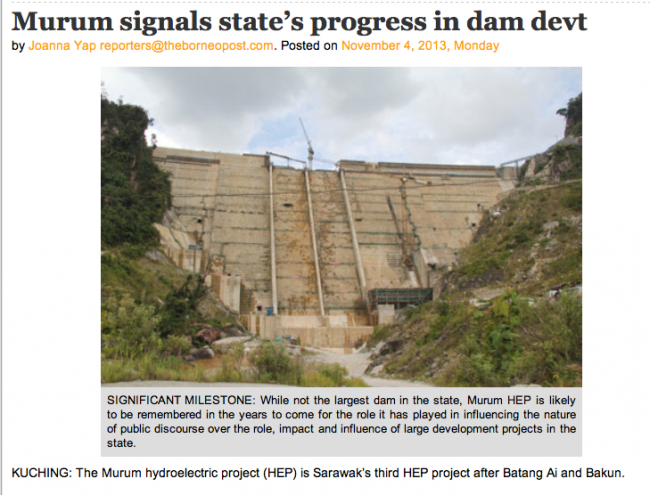
“No blockades”
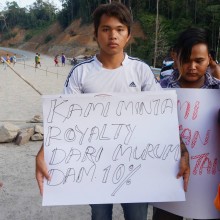
Sarawak Report has also learnt that throughout the trip the journalists were told by the SEB minders that there were no Penan or Kenyah blockades at the Murum site.
This information was a lie.
In fact the journalists were carefully driven round the protestors, who by this time had been sandwiched between two counter-blockades of armed police.
The reporters were transported in a massive armed convoy that restricted their ability to report much beyond what was in the mass of paperwork that SEB handed the journalists at the end of the trip.
One informant told Sarawak Report:
“SEB brought a huge delegation of reporters to Murum in 16 4-wheel drive vehicles with 16 armed police escorts (one driver and one SEB Press Officer in each car). Police intelligence posts were stationed all along the way to divert the convoy away from the Lg Lawen Kenyah protest party and Penan blockades.”
Worse, some journalists have reported that they were supplied with deeply offensive misinformation by some SEB representatives about the Penan and Kenyah tribespeople, whom the company has started forcefully flooding from their homes:
“They were told about how lazy, useless, drunk, dirty, uneducated, dependent on handouts and all things bad you can think of with regard to the Penan”
So much for the company weeping crocodile tears at the United Nations about how it has struggled to uplift and support the indigenous people being washed from their homelands?
Reports duly appeared which made no mention of the blockades by the indigenous local people.
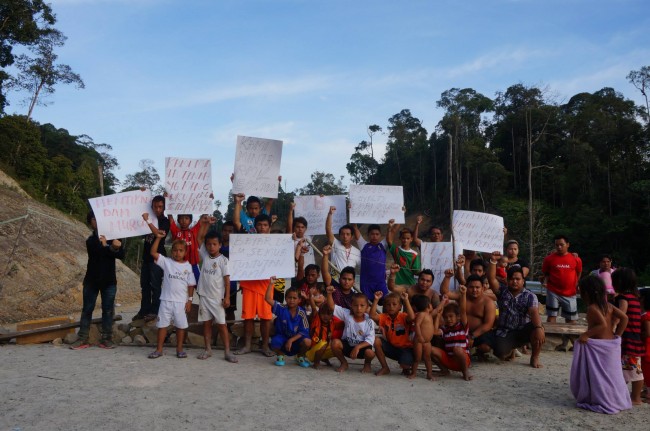
Welfare concerns
The developments at Murum come amidst an expression of growing concerns on the part of international NGOs over the welfare of these communities, which have been manning the open air blockades for many weeks.
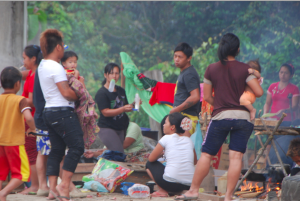
A delegation who managed to smuggle food to the families last week said that poor water supplies and the limited shelter from rain and sun had caused a number of stomach upsets and fevers in the camp, where there are many young children.
One benefit of the new site is that there is a cleaner stream near by. However, NGOs are concerned that it is by a hazardous main road.
The blockaders are asking for medicines and their food supplies are only sufficient for a few more days.
Sarawak Report has contributed (using earlier donations) to supporting new efforts to bring medicines and fresh food to the site.
Local NGOs monitoring the site are now awaiting the reaction of the authorities to the changing situation:
“Up to now the police handling of the blockaders has been a heavy armed presence, but their manner has been relaxed”, explained one NGO, who visited the Penan on Saturday. “But if SEB cannot continue with their construction work this may change. It seems very irresponsible of the company to have started the inundation of the dam without having fully completed its construction or even the construction of the power house”.
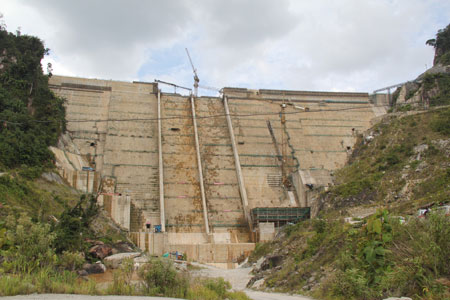
The NGO International Rivers say they are increasingly concerned about the situation in Murum and the welfare of the Penan and Kenyah. They are coordinating a statement from several NGOs to be published shortly.
“we are writing to express our serious concern about the situation of hundreds of Indigenous Penan women, men and children who are peacefully protesting at the site of the Murum Hydropower Project and have been surrounded and cordoned off by a barricade of armed police, as of 5 November, 2013. Lawyers, human rights groups, medics, media personnel and convoys carrying basic supplies of food and water for distribution all have reported that their access to the site has been denied.”[Tania Lee, International Rivers]

